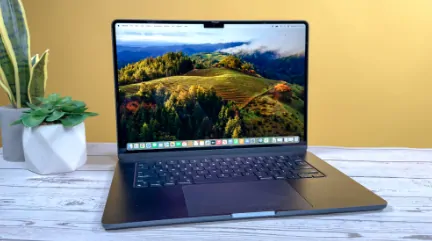In today’s digital age, Thelaptopaadviser.com finding the perfect laptop can feel like navigating a maze. With countless options available, each boasting various specifications, features, and price points, choosing the right one requires careful consideration. This guide will help you break down the essential factors to consider, so you can find a laptop that fits your needs and lifestyle.
For additional insights and recommendations tailored to your specific needs, visit TheLaptopAdviser.
1. Determine Your Primary Use
Before diving into specifications, consider how you plan to use your laptop. Are you a student who needs a reliable machine for note-taking and research? Perhaps you’re a gamer looking for high performance and graphics. Maybe you’re a professional who needs robust capabilities for design work or programming. Understanding your primary use will help narrow down your options.
- Basic Use: For tasks like web browsing, streaming, and word processing, an entry-level laptop with moderate specs will suffice.
- Multimedia and Gaming: Look for laptops with high-end processors, dedicated graphics cards, and ample RAM.
- Professional Work: Choose laptops with powerful processors, high-resolution displays, and substantial storage for software and files.
2. Operating System (OS)

The operating system (OS) is the platform on which your software runs. The three main options are:
- Windows: Versatile and widely used, suitable for gaming, business, and general use.
- macOS: Known for its sleek design and integration with other Apple products, ideal for creative professionals and those already in the Apple ecosystem.
- Chrome OS: Lightweight and focused on web-based applications, perfect for basic tasks and users who rely heavily on cloud services.
3. Portability and Size
Laptops come in various sizes, ranging from ultra-portable 11-inch models to larger 17-inch devices. For more insights and advice, visit Review Thelaptopaadviser.com/ and consider the following:
- Size and Weight: If you travel frequently or need to carry your laptop around, a smaller, lighter model may be more practical.
- Screen Size: Larger screens (15-17 inches) provide a more immersive experience, especially for multimedia and work tasks, but they can be bulkier.
- Battery Life: Look for a laptop with long battery life if you need to use it on the go without frequent recharging.
4. Performance Specifications
Performance is crucial for ensuring your laptop can handle your tasks efficiently. Key specs to consider include:
- Processor (CPU): The CPU is the brain of your laptop. Intel’s Core i3, i5, and i7, as well as AMD’s Ryzen 3, 5, and 7, are common choices. Higher numbers generally indicate better performance.
- Memory (RAM): RAM affects how many applications you can run simultaneously. For basic tasks, 8GB is usually sufficient. For more demanding tasks, such as video editing or gaming, consider 16GB or more.
- Storage: Choose between Hard Disk Drives (HDDs) and Solid State Drives (SSDs). SSDs are faster and more reliable but can be pricier. A minimum of 256GB SSD is recommended for smooth performance.
5. Graphics
For general use, integrated graphics are sufficient. However, if you’re into gaming, graphic design, or video editing, a dedicated graphics card (GPU) will provide better performance. NVIDIA and AMD are leading GPU manufacturers, offering various models to suit different needs.
6. Build Quality and Design
The build quality and design of a laptop can impact both durability and usability:
- Material: Laptops made from metal or high-quality plastics tend to be more durable than those with cheaper materials.
- Keyboard and Trackpad: A comfortable, responsive keyboard and trackpad are crucial for an enjoyable typing and navigation experience. If possible, test these components before purchasing.
- Screen Quality: Look for a high-resolution display (at least Full HD, or 1920×1080) with good color accuracy and brightness. Touchscreens can be a plus, depending on your preferences.
7. Connectivity and Ports

Ensure the laptop has the connectivity options you need:
- USB Ports: Multiple USB ports (including USB-C) allow you to connect peripherals like mice, keyboards, and external drives.
- HDMI: Useful for connecting to external monitors or projectors.
- SD Card Reader: Beneficial for photographers and videographers.
- Wi-Fi and Bluetooth: Modern laptops should support the latest Wi-Fi (preferably Wi-Fi 6) and Bluetooth standards for better performance and connectivity.
8. Budget
Your budget will play a significant role in determining your options. Here’s a rough guide to pricing:
- Under $500: Basic laptops suitable for light use.
- $500 – $1,000: Mid-range laptops with good performance for most tasks.
- $1,000 – $1,500: High-end laptops with advanced features and performance.
- Above $1,500: Premium laptops with top-of-the-line specifications, ideal for gaming, professional work, or high-end multimedia.
9. Brand and Support
Consider the brand reputation and after-sales support:
- Reliability: Established brands like Dell, HP, Lenovo, Apple, and ASUS often provide reliable products.
- Warranty and Support: Check the warranty period and available support options. Some brands offer extended warranties and premium support services.
Conclusion
Choosing the perfect laptop involves balancing your needs with your budget. By understanding your primary use, evaluating performance specifications, considering portability, and assessing design and connectivity, you can find a laptop that meets your requirements. For more in-depth reviews and personalized advice, LaptopAdviser is an excellent resource. Whether you’re a student, a professional, or a gamer, this guide should help you make an informed decision and find a laptop that will serve you well for years to come.
